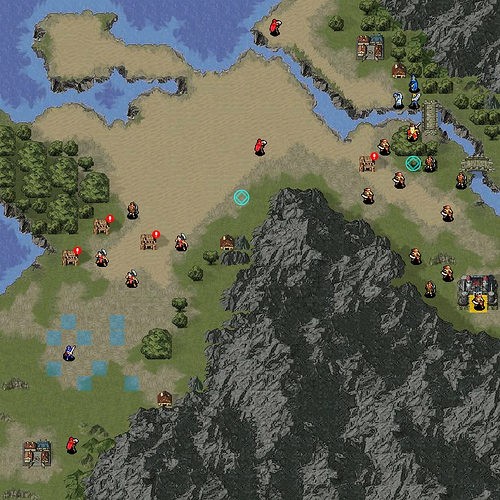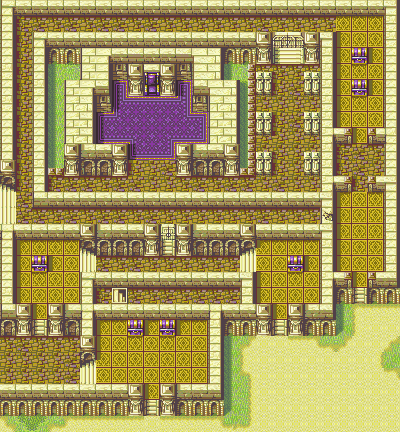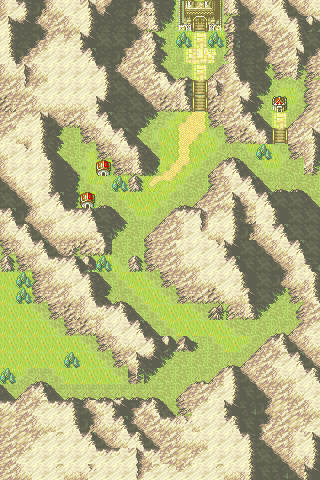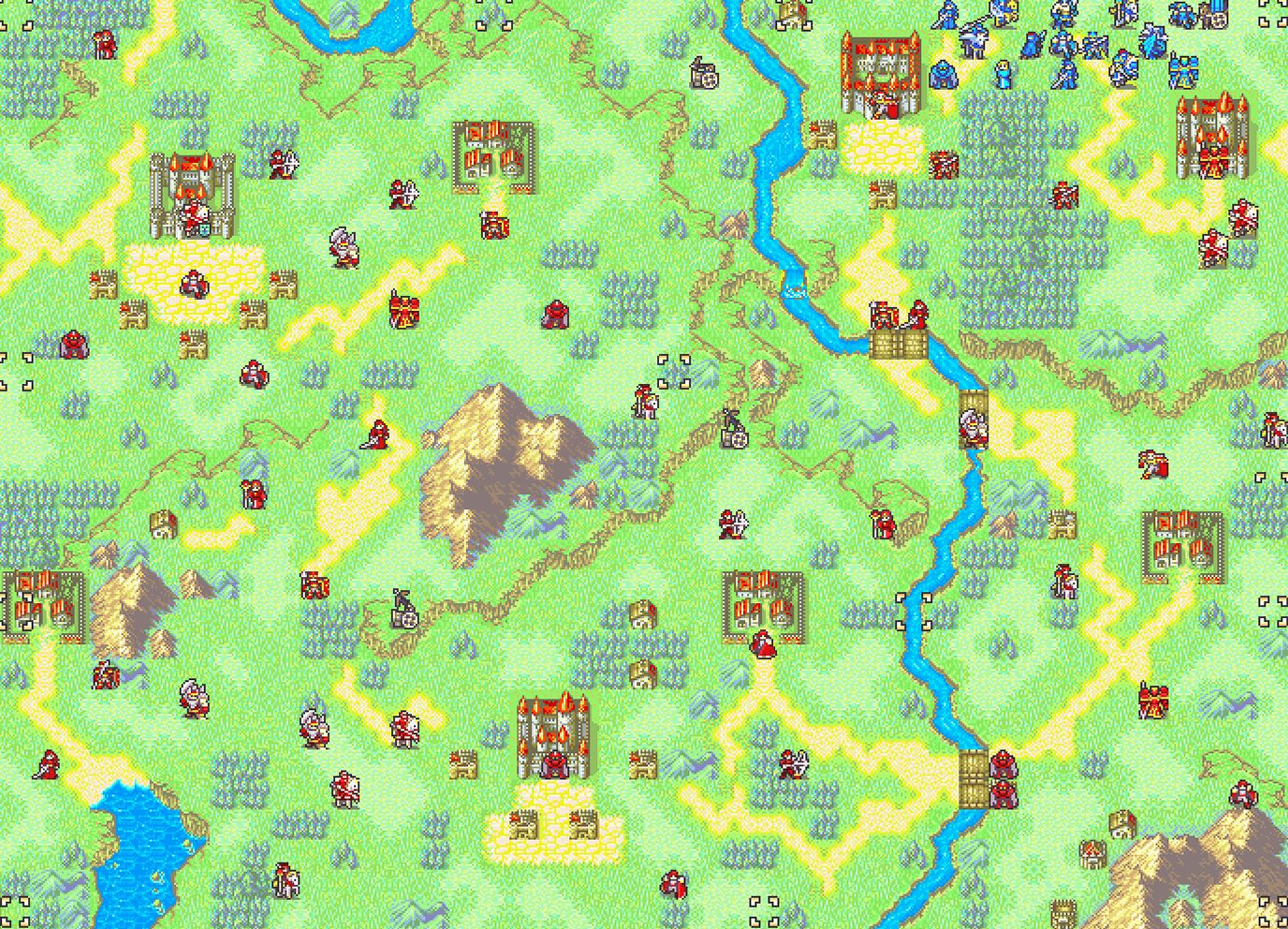Hello fellas. It’s been a while, eh? I figure since I keep yearning for the “good old days” of forum discussion before Discord made discussion too fast to be meaningful, why don’t I start with my original home, Fire Emblem Universe?
So, an opinion I’ve long held in Fire Emblem design is that you should always strive to make maps as concise as possible. Space should always have a reason to exist, whether it be to have a village, enemies, or anything else that directly contributes to gameplay. Large maps are bad because you spend a lot of time traversing them rather than doing something more interesting, and they quickly become busy work in games like FE4 where going to the next event can take several minutes.
However, lemme let you in on a few little secrets. Fire Emblem: The Binding Blade is my favorite game in the series, and one of my favorite maps ever is Chapter 11A, or “The Hero Of The Western Isles” from the same game. This chapter’s map is huge. So why do I like it so much?
Well. Having made maps for such a long time, I’ve recognized that small maps have a fairly glaring weakness. It’s difficult to make complex scenarios in them because you have so little space to work with. For example, I find it hard to envision what “Hero Of The Western Isles” would look like if the map’s size were “cut by 3.” Lots of events happen in it. Klein pops in from the south. Tate pops in from the north. Echidna’s fighting dudes in the east, and you’re trying to haul your ass over to not only resolve all these events, but to also save every damn village… At least, if you’re not okay with letting some of these things go horribly wrong.
I love this map, and it’s exhilarating to concoct a well developed plan to 100% complete it.
This isn’t to say it’s a flawless map. It’s still big, which means iteration times are gonna be obnoxious, and there’s a few moments where you’re not doing much. But if you want complex maps, a little bit of extra fat tends to be the tradeoff.
I think big maps serve another important purpose. Fire Emblem can be stressful. Having those moments where you’re not doing much after a difficult encounter with a group of enemies can serve as a pallet cleanser. Sometimes having your first turn not involve any interactions with the enemy is good because it allows you to prepare for the later turns when you are. Beyond that however, larger maps can help with atmosphere. The world feels bigger and more grandiose when there is more of it to see. Look no further than FE4 for that.
The bottom line is this. While large maps can be really boring and unfun, that doesn’t mean they are entirely without merit. Being closed minded to an idea that appears bad can sometimes prevent you from taking risks that lead to interesting places. As Alan Watts once said, “Don’t get hung up on a certain way of viewing the world.”
I hope you enjoyed my TED talk. 



